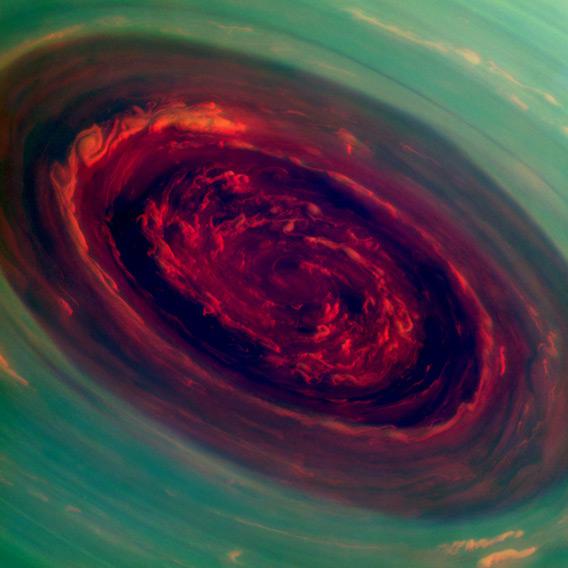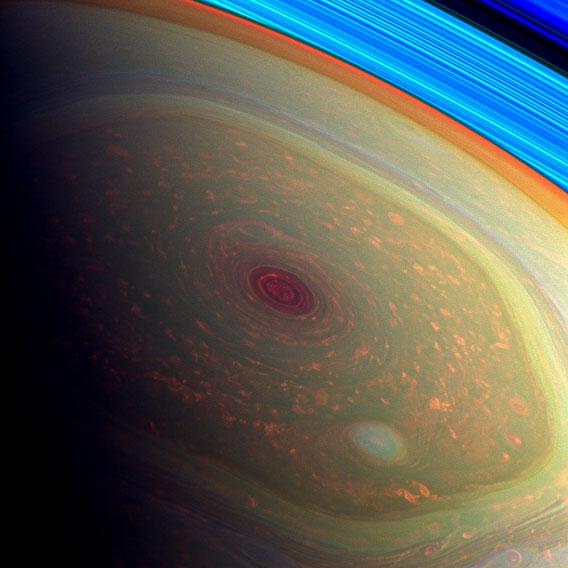The Cassini spacecraft routinely sends pretty amazing pictures back to Earth, but every now and again I see one that makes me literally gasp. So, in the are-you-freaking-kidding-me department, here’s a gasp-worthy shot of a hurricane at Saturn’s north pole that rages over an area 2000 kilometers (1200 miles) across:

Seriously, right?
This was taken in the near infrared, just outside what the eye can see, displayed in false color so we can see it—in other words, the storm isn’t really red, it’s just displayed that way. In these filters, low clouds look red and higher clouds are green*. I love the festoons, swirls, and delicate-appearing structures in the vortex. However, wind speeds there are about 500 kilometers per hour (330 mph) so it’s hardly a gentle breeze!
This storm sits centered on Saturn’s north pole, and now that Saturn’s northern hemisphere is approaching summer, it’s only recently begun seeing sunlight for the first time since Cassini’s arrival in 2004. I suspect the low angle of sunlight helps aid the contrast and beauty of this picture. This picture is even cooler than the last (greyscale) image of the storm from Cassini, released in November 2012.

The storm itself sits inside a vast hexagon-shaped cloud pattern, 20,000 kilometers (12,000 miles) across. That’s comfortably larger than Earth, incidentally. This polar vortex, as it’s called, arises naturally when you have fluids (in this case, atmospheric gases) rotating at different speeds.
I’ll note that Saturn is the most distant of the (easily seen) naked-eye planets, and is now well-positioned for viewing all night long. As we circle the Sun, the Earth is almost directly between the Sun and Saturn, so they appear on opposite sides of the sky. Called opposition, this is the time when Saturn rises at sunset and sets at sunrise, so it’s up all night. It also means it’s the closest the planet will be to Earth until next year, so now’s the time to see it. You can just see the rings through decent binoculars, and even a small telescope will show you their stunning beauty. EarthSky has instructions on viewing, as does Universe Today.
Go and look! Saturn is one of the best and most rewarding objects in the sky to observe. It may change your life. It did mine.
Correction, April 30, 2013, 17:20 UTC: In the original text, I had the colors/heights of the clouds incorrectly labeled. That’s been fixed.